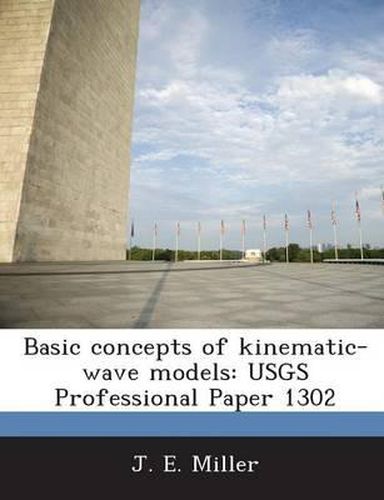Readings Newsletter
Become a Readings Member to make your shopping experience even easier.
Sign in or sign up for free!
You’re not far away from qualifying for FREE standard shipping within Australia
You’ve qualified for FREE standard shipping within Australia
The cart is loading…






The kinematic-wave model is one of a number of approximations of the dynamic-wave model. The dynamic-wave model describes one-dimensional shallow-water waves (unsteady, gradually varied, open-channel flow). The report provides a basic reference on the theory and application of kinematic-wave models and describes the limitations of the model in relation to the other approximations of the dynamic-wave model. In the kinematic-wave approximation, a number of the terms in the equation of motion are assumed to be insignificant. The equation of motion is replaced by an equation describing uniform flow. Thus, the kinematic-wave model is described by the continuity equation and a uniform flow equation such as the well-known Chezy or Manning formulas. Kinematic-wave models are applicable to overland flow where lateral inflow is continuously added and is a large part of the total flow. For channel-routing applications, the kinematic-wave model always predicts a steeper wave with less dispersion and attenuation than actually occurs. The effect of the accumulation of errors in the kinematic-wave model shows that the approximations made in the development of the kinematic-wave equations are not generally justified for most channel-routing applications. Modified flow-routing models can be used which help to stop the accumulation of error that occurs when the kinematic-wave model is applied.
$9.00 standard shipping within Australia
FREE standard shipping within Australia for orders over $100.00
Express & International shipping calculated at checkout
The kinematic-wave model is one of a number of approximations of the dynamic-wave model. The dynamic-wave model describes one-dimensional shallow-water waves (unsteady, gradually varied, open-channel flow). The report provides a basic reference on the theory and application of kinematic-wave models and describes the limitations of the model in relation to the other approximations of the dynamic-wave model. In the kinematic-wave approximation, a number of the terms in the equation of motion are assumed to be insignificant. The equation of motion is replaced by an equation describing uniform flow. Thus, the kinematic-wave model is described by the continuity equation and a uniform flow equation such as the well-known Chezy or Manning formulas. Kinematic-wave models are applicable to overland flow where lateral inflow is continuously added and is a large part of the total flow. For channel-routing applications, the kinematic-wave model always predicts a steeper wave with less dispersion and attenuation than actually occurs. The effect of the accumulation of errors in the kinematic-wave model shows that the approximations made in the development of the kinematic-wave equations are not generally justified for most channel-routing applications. Modified flow-routing models can be used which help to stop the accumulation of error that occurs when the kinematic-wave model is applied.